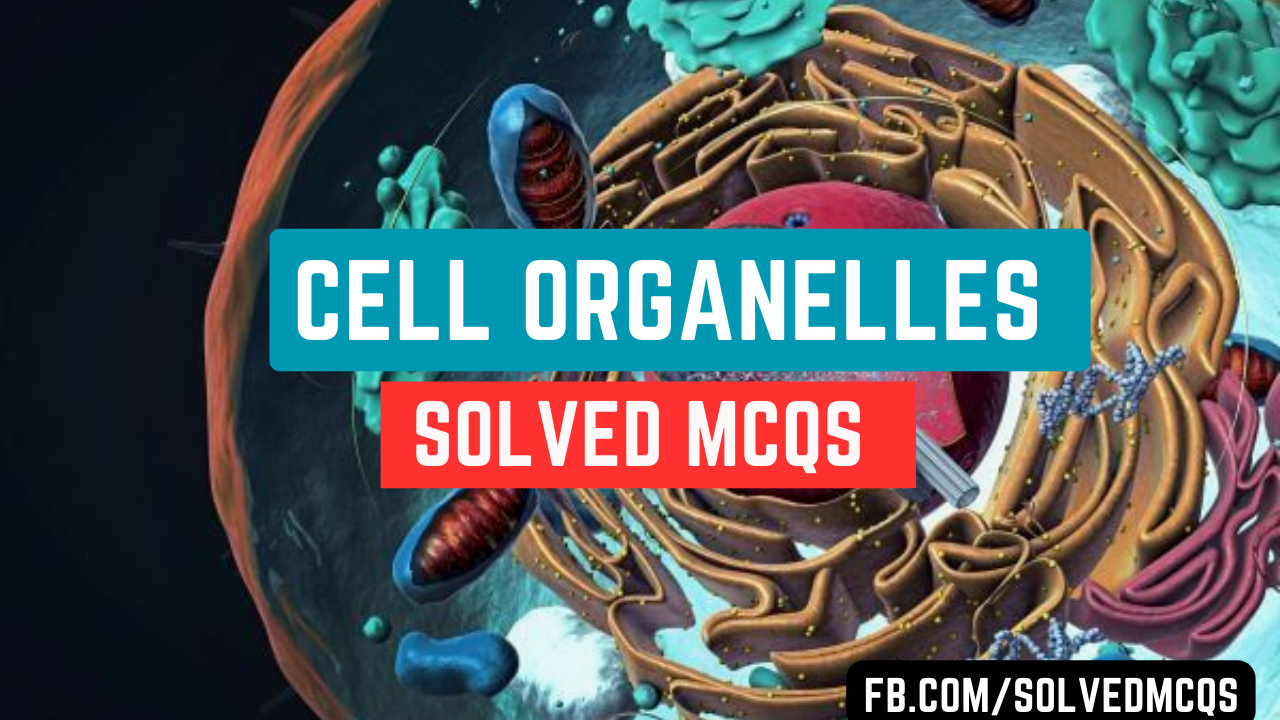Cell Organelles multiple-choice questions MCQs with Answers 1. Fluid mosaic model belongs to: a. Cell membrane b. Cell wall c. D...
Cell Organelles multiple-choice questions MCQs with Answers
1. Fluid mosaic model belongs to:
a. Cell membrane
b. Cell wall
c. Dermis
d. Endodermis
Answer: a. Cell membrane
2. The flattened sacs in the cell are called:
a. Thylakoid
b. Cristae
c. Cisternae
d. Centriole
Answer: c. Cisternae
a. Robert Hook
b. Robert Brown
c. Robert Boyle
d. Schleiden
Answer: b. Robert Brown
4. The organelle that produces energy is:
a. Ribosomes
b. Mitochondria
c. Nucleus
d. Vacuole
Answer: b. Mitochondria
5. Cisternae belongs to:
a. Mitochondria
b. Vacuole
c. Nucleus
d. Golgi apparatus
Answer: d. Golgi apparatus
6. Rough endoplasmic reticulum serves a function in the synthesis of:
a. Carbohydrates
b. Lipid
c. Protein
d. Vitamin
Answer: c. Protein
7. Fluid of chloroplast is called:
a. Cytoplasm
b. Cytosol
c. Stroma
d. Nucleoplasm
Answer: c. Stroma
8. Pores through which cytoplasm of the adjacent cell can exchange:
a. Stomata
b. Plasmodesmata
c. lenticels
d. Cuticle
Answer: b. Plasmodesmata
a. Golgi bodies
b. Ribosomes
c. Lysosomes
d. Mitochondria
Answer: d. Mitochondria
10. In 1974 noble prize for physiology and medicine was won by:
a. Rene de Due
b. Golgi
c. Lamark
d. Aristotle
Answer: a. Rene de Due
11. Only certain molecules or ions can pass through it by osmosis:
a. Permeable membrane
b. Semipermeable membrane
c. Non permeable membrane
d. Cell wall
Answer: b. Semipermeable membrane
12. Ribosomal RNA is produced in:
a. Mitochondria
b. Nucleolus
c. Lysosomes
d. Golgi apparatus
Answer: b. Nucleolus
13. The sites of aerobic respiration in cells are:
a. Golgi bodies
b. Ribosomes
c. Mitochondria
d. Plastids
Answer: c. Mitochondria
a. Leucoplasts
b. Chloroplasts
c. Chromoplasts
d. Lipoplasts
Answer: a. Leucoplasts
15. The cell wall of prokaryotes is composed of:
a. Lignin
b. Cellulose
c. Peptidoglycan
d. Chitin
Answer: c. Peptidoglycan
16. Which of the following organelle functions to package and deliver proteins?
a. lysosome
b. Mitochondria
c. Golgi apparatus
d. endoplasmic reticulum
Answer: c. Golgi apparatus
17. Which of the following organelle produces energy, known as ATP, for the cell?
a. lysosome
b. Mitochondria
c. Golgi apparatus
d. endoplasmic reticulum
Answer: b. Mitochondria
18. Which of the following cellular organelles is responsible for protein synthesis?
a. Lysosome
b. Ribosomes
c. Centrioles
d. Vacuoles
Answer: b. Ribosomes
19. Which of the following cell organelles is present in a plant cell and absent in the animal cells?
a. Mitochondria
b. Vacuoles
c. Cytoplasm
d. Cell wall
Answer: c. Cell wall
20. Which of the following cell organelles does NOT contain DNA?
a. Mitochondria
b. Nucleus
c. Chloroplast
d. Lysosomes and vacuoles
Answer: d. Lysosomes and vacuoles
21. Choose the correct statement about the cell wall?
a. The cell wall is mainly composed of lipid
b. The cell wall is mainly composed of starch
c. The cell wall is mainly composed of cellulose
d. The cell wall is mainly composed of protein
Answer: c. The cell wall is mainly composed of cellulose
22. Choose the correct statement about the cell theory?
a. The cell theory is not applicable to viruses
b. The cell theory is not applicable to algae
c. The cell theory is not applicable to fungi
d. The cell theory is not applicable to microbes
Answer: a. The cell theory is not applicable to viruses
23. The jelly-like substance inside the plasma membrane in which all cell organelles are floating is known as…?
a. Cytoplasm
b. Cell sap
c. Karyoplasm
d. Mitochondria
Answer: a. Cytoplasm
24. The “powerhouses” of the cell, oval-shaped organelles found in most eukaryotic cells are…?
a. lysosome
b. Mitochondria
c. Nucleus
d. Chloroplast
Answer: b. Mitochondria
25. Which of the following cell organelles regulates the transport of materials entering and exiting the cell?
a. Lysosome
b. Mitochondria
c. Golgi bodies
d. Cell membrane
Answer: d. Cell membrane
26. The branch of biology that studies cells, their physiological properties, their structure is known as…?
a. Biotechnology
b. Microbiology
c. Cell Botany
d. Cell Biology
Answer: d. Cell Biology
27. Which of the following cell organelles is also called ”Suicidal bags” because of their phagocytic activity?
a. Lysosome
b. Mitochondria
c. Golgi bodies
d. Cell membrane
Answer: a. Lysosome
28. Which of the following cell organelles is involved in the storage of food, and other nutrients, required for a cell to survive?
a. Vacuoles
b. Mitochondria
c. Golgi bodies
d. Cell membrane
Answer: a. Vacuoles
29. The cell organelle which is involved in the breakdown of organic matter is…?
a. Vacuoles
b. Lysosome
c. Golgi bodies
d. Cell membrane
Answer: b. Lysosome
30. Which organelle is involved in the synthesis of phospholipids?
a. the endoplasmic reticulum (ER)
b. Mitochondria
c. Cytoplasm
d. Lysosome
Answer: a. the endoplasmic reticulum (ER)
31. Choose the correct statement about the chromosomes?
a. It is present within the nucleus
b. It is composed of DNA
c. It carries genes and helps in inheritance
d. All of these
Answer: d. All of these
32. Which of the following are called single membrane-bound organelles?
a. Lysosome
b. Vacuole
c. Golgi Apparatus
d. All of these
Answer: d. All of these
33. Which of the following is NOT a double membrane-bound organelle?
a. Chloroplast
b. Mitochondria
c. Endoplasmic Reticulum
d. All of these
Answer: c. Endoplasmic Reticulum
34. Choose the correct statement about the Nucleus?
a. It contains DNA and other genetic materials
b. It is absent in prokaryotes
c. It is called the brain of the cell
d. All of these
Answer: d. All of these








COMMENTS